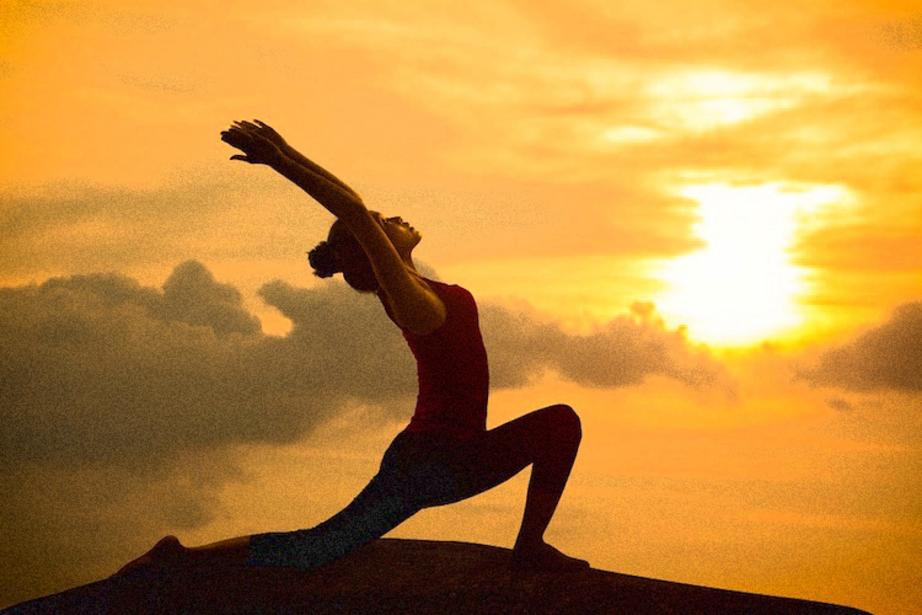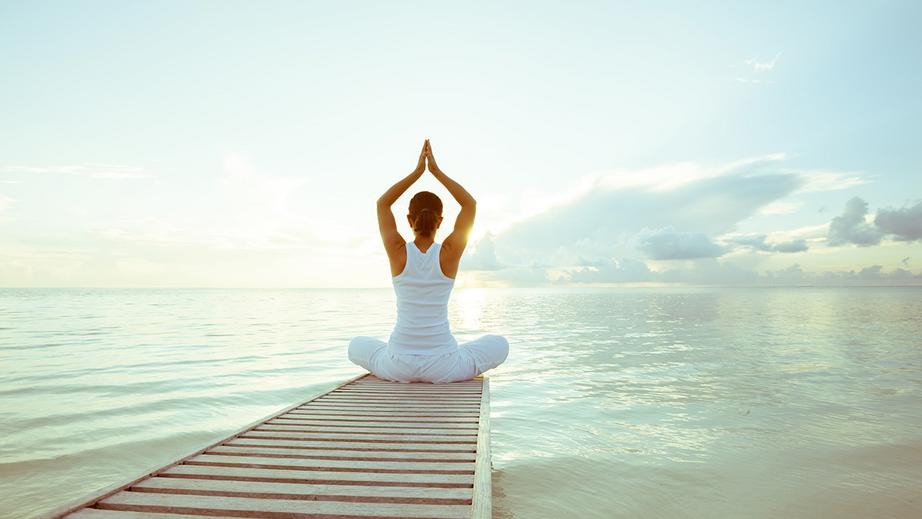The transformative power of jnana yoga and Ashtanga yoga
Yoga is the most ancient system for physical, mental and spiritual well-being in the world. The aim of the different yoga processes or schools is to ultimately help the individual achieve complete harmony. The different systems of yoga have techniques and practices ranging from physical postures (asanas), to the deepest stages of meditation, all aimed toward helping a person achieve optimum physical, mental and spiritual well-being. In this post, we will take a look at two of the main yoga systems i.e. Jnana Yoga and Ashtanga Yoga.

Jnana Yoga
It is the cultivation of transcendental knowledge. The aim of jnana yoga is to bring about realization of one’s spiritual essence, and therefore harmony (through understanding) between the individual atma and his mind, body, and the world. It is also meant to help the atma realize that he is part and parcel of the Supreme Atma and therefore needs to wed himself to, or get in harmony with the Supreme Atma.
Jnana yoga is the path where you try to merge into this Brahman by mental speculation called empirical philosophical speculation. You start analysing the world and your body and all the things that you know. For instance you start asking yourself, am I the foot? No, I’m not the foot. Okay. Am I the leg? No. Am I the thigh? No. Am I the arm, hand? And pretty soon you’ll eliminate, no, no, no, no. Am I the head? No.
And pretty soon, okay, I’m not the body. Am I the mind? And you start doing different techniques to realize you’re not the mind. You can change your mind. You can take your mind from here and put it over there. Take it from there and take it… You can control the mind and so on like this. So you realize I’m not the mind either. You eliminate the idea of the body and the mind, you see.
You want happiness and you see that all these things in this material world cause me so much problems. I want to go to a place of perfection and perfection would be no problems. No body. No mind. No other people. No world. I don’t even want to exist as an individual because that causes me a problem. I’m always worried about myself and about what others think. I don’t want to be me. I don’t want to be anybody. I just want to merge. Okay, Brahman is your destination. That’s exactly where you’ll go. If that’s what you want then follow this teaching sincerely, boom, there you are. But then you come back, you see. So this is the path of Jnana yoga. Also Kundalini yoga is taking a person in this direction as well.
Ashtanga Yoga
Then another path is called Ashtanga yoga. And again, you may have heard of Ashtanga yoga. But now usually it’s just a souped up version of Hatha yoga. But really Ashtanga yoga is made of eight different processes or steps. It’s called the eightfold mystic yoga system. And it starts with two activities known as yama and niyama. And that means basically following rules and regulations and giving up all your bad habits and all the things you are not supposed to be doing. So you clean up your act, so to speak. I’m running through this quite quickly.
Then the next step is asana. This is where Hatha yoga fits in, Hatha yoga. Now you are perfecting your physical body through all these different asanas. You want the body to be as good as it can be so it doesn’t get in the way of your future step of meditation. So you do your Hatha yoga, your pranayama, your breathing regulation and so on. This is the next step that stills the mind. Pranayama is stilling the mind because if it’s agitated it’s not a good tool for your meditation. So you go through your bodily perfection with your asanas, you can do your pranayama, quieten the mind, still the mind, get that stuff pretty well, pretty good shape.
Then you come to pratyahara. And that’s where a lot of people quit if they get this far. This is when you control your senses completely. No more sense gratification. Complete abstinence from sense enjoyment. You get to eat, but it’s really, really minimal. Just enough to keep the body and soul together and very, very plain. No spices, no tongue flashes of any type. You control what you hear.
That’s why silence is preferred by these practitioners because they don’t want to hear anything. They keep their eyes closed. They go to places where there is not a lot of glitter. Caves are a good place. You just sit there in your quiet cave; nobody disturbs you. Eyes closed, doing your breathing exercises, all these things. No sex life, none, zero; complete celibacy. You don’t even see women or men or whatever your sex is, the opposite sex. No, you don’t go there. No people at all is the best. That’s why they are reclusive. They go to the forest, they go to places where nobody is there. They don’t want to be disturbed. So really, really, really strict sense control.
When they’ve calmed all this down through this practice of pratyahara, they are ready for the next step. And that is dharana. And this is concentration. Now they can concentrate. And they can concentrate on whatever object it is. It could be a candle flame. It could be a sunrise, it could be a sunset, whatever it is. Body is not bothering them, mind is calm and still, senses are completely controlled. Now they can concentrate.
When all this other stuff is going on you can’t concentrate. That’s why people say, “I can’t meditate.” That’s why people can’t meditate. Because woooo, you are too agitated. “Oh, I’m thirsty, I’m hungry, I’m tired, I got this sex desire. Mmm, Om.” (laughter) “Man, I quit!” No, no, you got to put in the dues, man. You got to pay the price. Finally they get to this point. Okay, they zeroed in, concentrate.
Then the next step is dhyana. And that’s when you actually enter into meditation. And that is when the object of meditation is not a candle flame, it’s not a sunrise, it’s not a sunset, it’s not this; it’s the Supreme Lord Himself. And that is the Lord in the heart. They focus on the Paramatma. They can actually see the Paramatma in their heart when they reach higher levels of this concentration and meditation. They can actually see the Lord in the heart like we are seeing each other right now. They are meditating on the Lord in the heart which is an expansion of the Supreme Lord Bhagavan.
Now what happens is along the way as they become so austere and so in control of all of these things, they develop mystic powers, automatically so. They can levitate, they can make themselves invisible, they can make themselves lighter than the lightest, they can do all kinds of things. Astral travel, all kinds of mystic abilities. Things that you and I couldn’t even imagine could be true. They can do it. Now what happens is they get enamoured by this. It’s a distraction. Because all of a sudden, they are God, almost. Like, they are like God.
They can do this, that. They can control other people’s minds, they can read minds. They can do whatever. And it takes them back into their material wants and desires and controlling powers and abilities. So the great proponent of this system, Patanjali, always advised his followers, “Don’t even look at these mystic powers because they will take you off the path.” They will take you off the path.
And when they develop this ultimate perfection, they enter into samadhi. Now they are in trance. Their whole consciousness is focusing on the Lord in the heart. They are in trance. This is samadhi. There is different people calling different conditions of consciousness samadhi. But this is one samadhi. But ultimately what they do is enter into the Brahman effulgence again. So again, it’s not the ultimate destination. It’s amazing, no question about it. But it’s not the ultimate destination for the soul. The soul is not completely satisfied.
Check some more videos on science of yoga.
For the rest of this article please go to source link below.
Video can be accessed at source link below.

